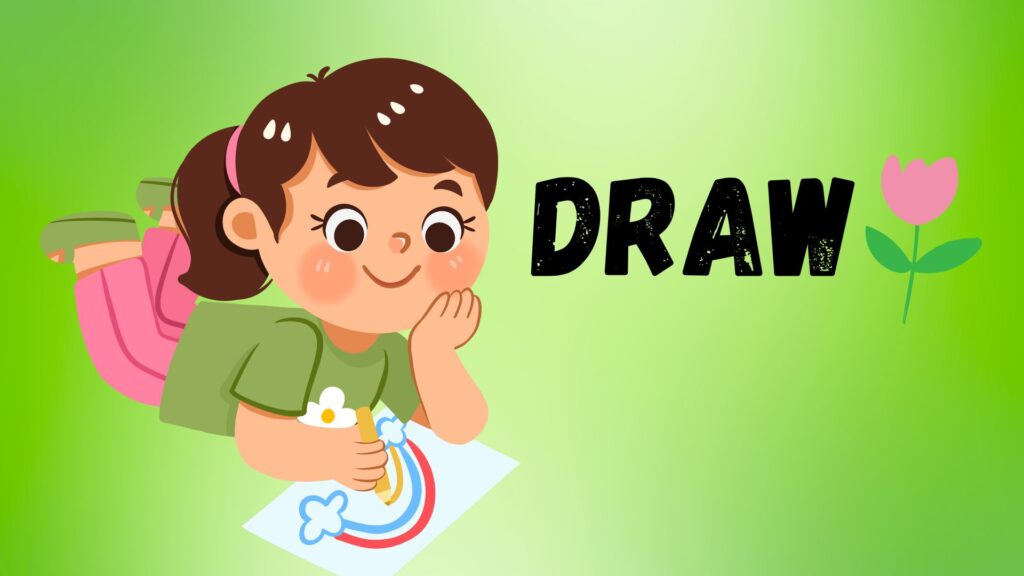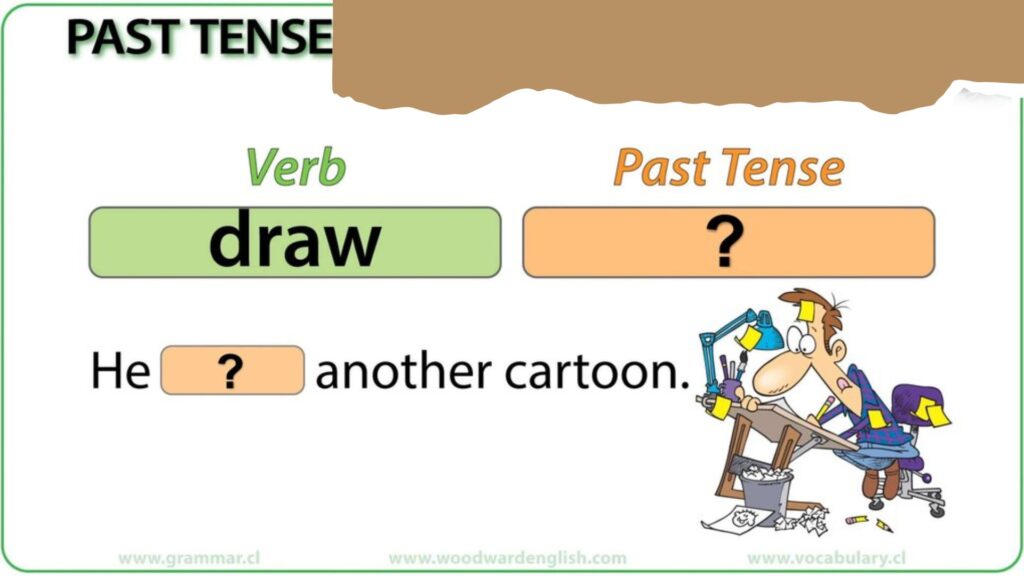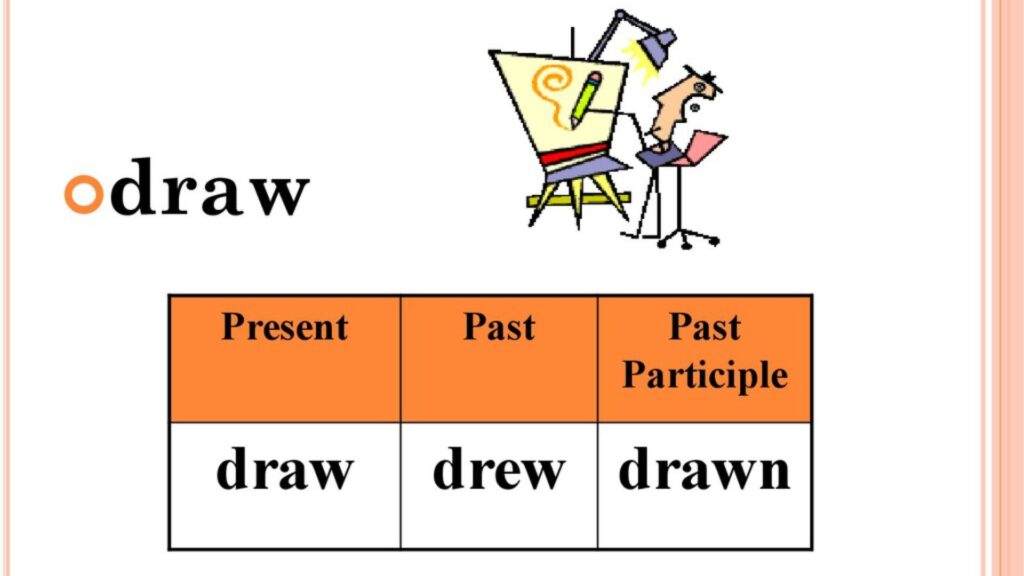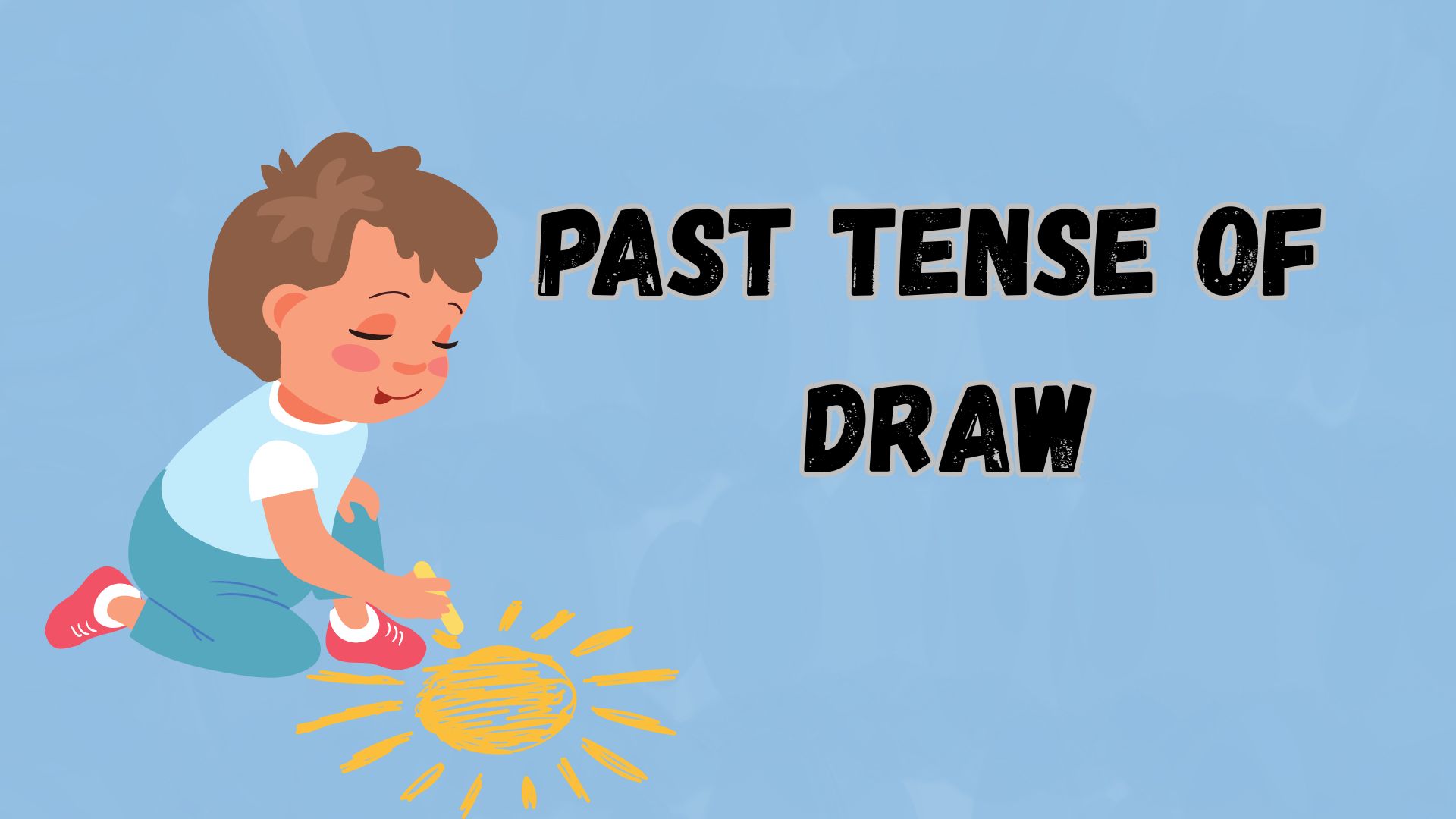Ever stared at a sentence and wondered: Is it draw, drew, or drawn? You’re not alone. The verb “draw” can be surprisingly tricky when it comes to past tense usage especially because it’s an irregular verb, and irregular verbs love breaking the rules.
Let’s break it all down, from the correct forms to the common mistakes, and give you real-world scenarios you can relate to.
Understanding the Verb “Draw”

First off, what does “draw” even mean? That depends on the context. This verb isn’t limited to sketching something on paper. Here are a few common uses:
- To sketch or illustrate: She likes to draw portraits.
- To pull or move: They drew the curtain open.
- To attract: The speaker drew a large crowd.
- To tie in a game: The match ended in a draw.
Yes, English can be wonderfully confusing like that.
Verb Forms of Draw
Before we explore examples, here’s the conjugation of “draw”:
| Tense | Form |
|---|---|
| Present | draw / draws (3rd person singular) |
| Simple Past | drew |
| Past Participle | drawn |
| Present Participle | drawing |
| Base Form | draw |
⚠️ “Drawed” is incorrect. It’s a common mistake, but it doesn’t exist in standard English grammar.
So, What’s the Past Tense of Draw?

The simple past tense is drew.
The past participle is drawn.
Let’s get this crystal clear:
- ✅ Yesterday, I drew a picture.
- ✅ She had drawn a detailed map before the trip.
- ❌ He drawed a landscape in class. ← Incorrect
Using “Drew” – The Simple Past Tense
“Drew” is used when describing a completed action in the past, typically without needing helper verbs.
🔹 Example:
Last week, Peter drew a comic strip for his art class.
📧 Sample Scenario – Email:
Subject: Yesterday’s Sketching Assignment
Hi Jonathan,
Just a heads-up that I drew a concept sketch of the new layout for the lobby. It’s attached to this email. Let me know what you think.
Cheers,
Emily
In this case, “drew” is simple, direct, and doesn’t require any helping verbs. You’re just stating what happened plain and clear.
Using “Drawn” – The Past Participle
“Drawn” is typically used in perfect tenses and with helping verbs like have, has, or had.
🔹 Example:
By the time we arrived, she had drawn the entire floor plan.
The past participle form “drawn” works in past perfect, present perfect, and future perfect constructions.
📧 Sample Scenario – Workplace Email:
Subject: Updated Blueprint
Hi Carla,
The architect has drawn a preliminary model based on our feedback. I’ve attached the PDF version. Please review it before Friday’s meeting.
Best,
Marcus
See how “has drawn” fits the present perfect structure? It implies the action was recently completed and still relevant now.
Common Mistake: “Drawed”
Let’s put this one to rest.
- ❌ He drawed a picture of his house.
- ❌ I have drawed a new chart.
“Drawed” is not a real word in English. It’s a false conjugation likely created by following regular verb patterns (like walk → walked), but “draw” is irregular. It doesn’t play by those rules.
If you ever feel tempted to say “drawed,” replace it with either “drew” or “drawn,” depending on the sentence structure.
Drew vs Drawn: Quick Reference Table
| Usage | Drew | Drawn |
|---|---|---|
| Tense | Simple Past | Past Participle |
| Helper Verbs? | No | Yes (has, have, had) |
| Example | He drew a sword. | They have drawn up a proposal. |
| Common Context | Completed action in the past | Perfect tenses, passive voice sometimes |
Related Verbs: Irregular Patterns

English has plenty of verbs that follow a similar irregular pattern. Here’s a comparison:
| Base Verb | Simple Past | Past Participle |
|---|---|---|
| draw | drew | drawn |
| fly | flew | flown |
| blow | blew | blown |
| eat | ate | eaten |
| drink | drank | drunk |
These verbs are often taught together in English verb conjugation drills or with study tips like flashcards or rhyming mnemonics. If you’re learning English, committing these to memory is a smart move.
When “Draw” Isn’t About Art
Sometimes draw has nothing to do with sketching. It can mean:
- To attract: The event drew thousands of fans.
- To pull: She drew the blanket over herself.
- To end in a tie: The game ended in a draw.
📘 Grammar Tip:
Even in these meanings, the past tense remains the same:
- Drew is used for simple past.
- Drawn is used for perfect tenses.
✅ The speaker drew attention with his charisma.
✅ The curtains have been drawn to block out the sun.
Collocations and Examples
Let’s explore how “draw” commonly shows up in sentences:
| Phrase | Example |
|---|---|
| Draw a picture | She drew a picture of her childhood home. |
| Draw attention | The bold font drew attention immediately. |
| Draw a map | We had drawn a map to guide visitors. |
| Draw beautifully | You draw beautifully, Peter! |
| Draw the graph | The app automatically draws the graph. |
These common phrases often pop up in business emails, school assignments, and even social media posts. Being fluent in their use gives your writing that natural, polished feel.
Etymology & History of “Draw”
The word “draw” traces back to Old English “dragan,” meaning to pull or drag, with roots in Proto-Germanic. Over centuries, its meaning expanded from pulling a sword to sketching a sunset.
🔚 Final Takeaways: Mastering “Draw”
Here’s a handy checklist to remember:
- Drew = Simple past (I drew a bird.)
- Drawn = Past participle (She has drawn for years.)
- Drawed = ❌ Not a word.
- Use helping verbs (has, have, had) with drawn.
- Recognize context: art, attraction, pulling, or game results.
So next time you’re writing a sentence like, “He ___ a dragon,” you’ll confidently say, “drew,” not “drawed” or “drawn.”

